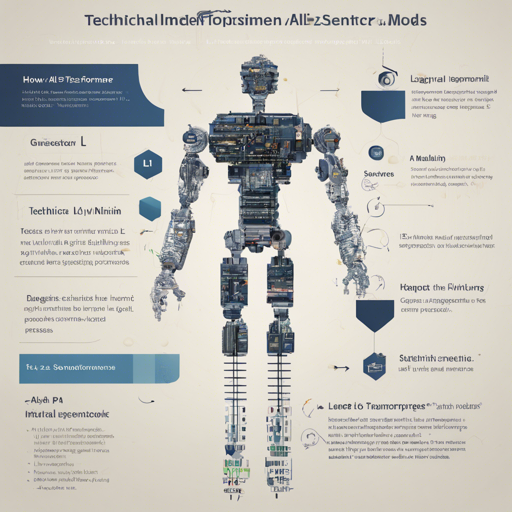In the realm of Natural Language Processing (NLP), transforming sentences into dense vector representations is crucial for tasks such as clustering, semantic search, and sentence similarity. In this article, we will explore how to utilize the all-MiniLM-L12-v2 sentence-transformer model, enabling you to efficiently convert sentences into embeddings. Let’s embark on this journey together!
Understanding Sentence Transformers
Just like an artist uses various brush strokes to create a vivid painting, the sentence-transformers library allows us to map sentences and paragraphs to a 384-dimensional dense vector space. This transformation captures the essence of the sentences, making it easier to understand their similarities and differences in a structured manner.
Installation
To begin, you’ll need to install the sentence-transformers library. Here’s how you can do it:
pip install -U sentence-transformersUsage of Sentence-Transformers
Once the installation is complete, you can use the model to convert sentences into embeddings. Here’s a simple implementation:
from sentence_transformers import SentenceTransformer
# Define your sentences
sentences = ["This is an example sentence.", "Each sentence is converted"]
# Load the model
model = SentenceTransformer('sentence-transformers/all-MiniLM-L12-v2')
# Generate embeddings
embeddings = model.encode(sentences)
# Output the embeddings
print(embeddings)Using HuggingFace Transformers
If you prefer to use HuggingFace Transformers along with the sentence transformer, you can follow the code snippet below:
from transformers import AutoTokenizer, AutoModel
import torch
import torch.nn.functional as F
# Mean Pooling function
def mean_pooling(model_output, attention_mask):
token_embeddings = model_output[0] # First element of model_output contains all token embeddings
input_mask_expanded = attention_mask.unsqueeze(-1).expand(token_embeddings.size()).float()
return torch.sum(token_embeddings * input_mask_expanded, 1) / torch.clamp(input_mask_expanded.sum(1), min=1e-9)
# Sentences
sentences = ["This is an example sentence.", "Each sentence is converted"]
# Load model from HuggingFace Hub
tokenizer = AutoTokenizer.from_pretrained('sentence-transformers/all-MiniLM-L12-v2')
model = AutoModel.from_pretrained('sentence-transformers/all-MiniLM-L12-v2')
# Tokenize sentences
encoded_input = tokenizer(sentences, padding=True, truncation=True, return_tensors='pt')
# Compute token embeddings
with torch.no_grad():
model_output = model(**encoded_input)
# Perform pooling
sentence_embeddings = mean_pooling(model_output, encoded_input['attention_mask'])
# Normalize embeddings
sentence_embeddings = F.normalize(sentence_embeddings, p=2, dim=1)
# Output the sentence embeddings
print("Sentence embeddings:")
print(sentence_embeddings)Analogy for the Code Explained
Imagine you are sorting a collection of different colored marbles. Each time you pick a marble, you want to remember its specific color (the embeddings), so you create a mental note. The code above works similarly by “picking” sentences and transforming them into a format (embeddings) that captures their unique features (mean pooling) while allowing you to easily compare them later.
Evaluation Results
To assess the performance of our model, you can follow the Sentence Embeddings Benchmark. This link provides insightful evaluation metrics to understand the effectiveness of your transformations.
Troubleshooting
If you encounter any issues while working with the all-MiniLM-L12-v2 model, consider the following troubleshooting steps:
- Ensure that all required packages are correctly installed, and you are using compatible versions.
- Double-check the syntax in your code, especially when copying snippets.
- For PyTorch users, validate your CUDA setup if you are attempting to use GPU acceleration.
- If embeddings aren’t outputting as expected, examine the input sentences for proper formatting.
For more insights, updates, or to collaborate on AI development projects, stay connected with fxis.ai.
Final Thoughts
At fxis.ai, we believe that such advancements are crucial for the future of AI, as they enable more comprehensive and effective solutions. Our team is continually exploring new methodologies to push the envelope in artificial intelligence, ensuring that our clients benefit from the latest technological innovations.

